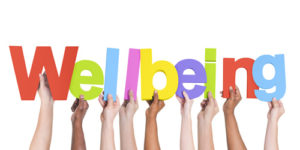The acute wellbeing needs of young people today are at crisis levels, and higher-ed leaders know that college students require additional supports from their schools, parents, and counselors. In fact, The Council for the Advancement of Standards for Higher Education (CAS) has produced the new Cross-Functional Framework for Advancing Health and Well-Being to address the complex issues of health, well-being, flourishing, and thriving of college students in the context of a healthy community. Further, the National Survey of Student Engagement (NSSE) measures the degree to which higher-ed institutions are committed to student success and providing support for students’ overall well-being across a variety of domains, including the cognitive, social, and physical.
Provosts, along with all president’s council members, are required to provide leadership to university accreditations. They have to demonstrate the ability to implement CAS wellbeing standards and improve NSSE results. It is to the benefit of university leaders to prioritize student wellbeing outcomes—e.g., to meet national standards, retain students, and succeed in their mission as educators.
So then, why is higher ed not taking bold action to impact the dire well-being statistics?
Do we really need more data before acting?
Student wellbeing has been a problem for years
“In 2018, researchers who surveyed almost 14,000 first-year college students (in eight countries) found that 35 percent struggled with a mental illness, particularly depression or anxiety,” according to an article in Greater Good Magazine. “Here in the U.S., college students seeking mental health services report that anxiety is their number one concern—and it is on the rise.”
A recent New York Times article states, “Most American teenagers—across demographic groups—see depression and anxiety as major problems among their peers, according to a new survey by the Pew Research Center. The survey found that 70 percent of teenagers saw mental health as a big issue.”
Related: What is your college doing to help students handle stress?
Clearly, we can agree that there are well-being problems in our society and that we are all struggling with how to impact them. Is the slowness to act not understanding how, or is it a matter of leadership courage? We challenge university leaders to take two actions today!
2 actions to take to address wellbeing in higher ed
Action number 1: Assess the wellbeing of all students
Provosts and other university leaders need a clear picture of their students’ psychological wellbeing. First-year programs, academic advising orientations, and counseling and psychological services outreach initiatives are natural places to conduct universal assessments. People pay attention to what they measure—so choose your scale carefully, preferably one that focuses on aspirational goals and attributes of human flourishing.
Emotionally and psychologically healthy young adults possess the following qualities or attributes, which can be measured by the Ryff Psychological Wellbeing Scale:
- Autonomy – self-determining and independent, able to resist social pressures to think and act in certain ways, regulates behavior from within, and evaluates one’s self by personal standards
- Environmental mastery – a sense of mastery and competence in managing the environment, controls a complex array of external activities, makes effective use of surrounding opportunities, and is able to choose or create contexts suitable to personal needs and values
- Personal growth – a feeling of continued development, sees the self as growing and expanding, is open to new experiences, has a sense of realizing his or her potential, sees improvement in self and behavior over time, and is changing in ways that reflect more self-knowledge and effectiveness
- Positive relations with others – is able to have warm, satisfying, trusting relationships with others; is concerned about the welfare of others; is capable of strong empathy, affection, and intimacy; and understands the give and take of human relationships
- Purpose in life – has goals and dreams in life and a sense of directedness, feels there is meaning to present and past life experiences, holds beliefs that give life purpose, and has aims and objectives for living
- Self-acceptance – possesses a positive attitude toward the self, acknowledges and accepts multiple aspects of self, including good and bad qualities, and feels positive about previous life experiences
Action number 2: Train faculty in self across the curriculum
To experience self-knowledge is the height of social-emotional capacity and the most direct path to wellbeing. Therefore, educators require a tool bag of approaches to impact the self of their students. The Self Across the Curriculum is one research-based best practice available to university faculty that effectively combines well-being into classroom curricula.
Just as the popular university Writing Across the Curriculum program has two simultaneous goals—to teach writing skills through academic content and to use writing to teach subject content—the Self Across the Curriculum also has two goals: to teach self-knowledge through academic content and to use self-knowledge to connect with the content more thoroughly and deeply. This type of teaching and learning requires a different focus, an internal focus versus an external one. It drives the learner to look inward first, to know one’s self and attain a sense of purpose, dreams, moral center, and personal strengths, so as to literally create or construct one’s self.
Related: Student wellbeing is more important than you think
When the self becomes the lens through which students learn, students can balance cognitive with non-cognitive factors to become happy and whole people who are equipped to create a positive life and make contributions toward a better society.
Provosts and all higher education leaders have the moral obligation to take action today, just in time to meet the needs of today’s college students.
- A bungled FAFSA rollout threatens students’ college ambitions - April 19, 2024
- Using real-world tools to prepare students for the workforce - April 18, 2024
- 8 top trends in higher education to watch in 2024 - April 16, 2024

